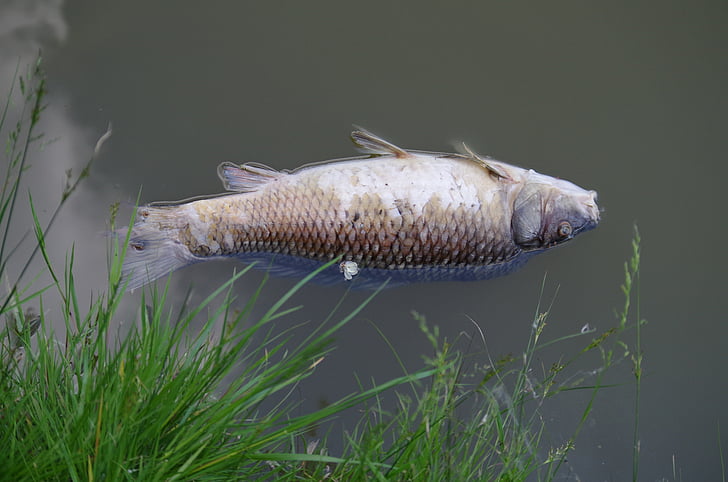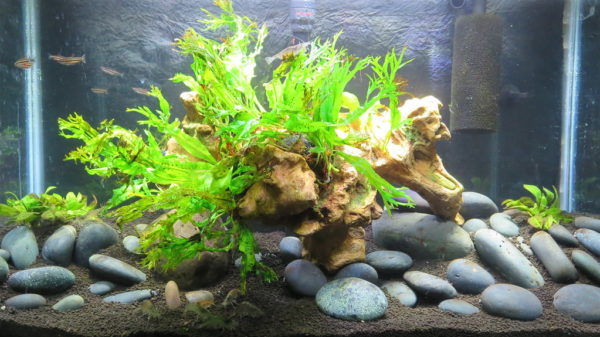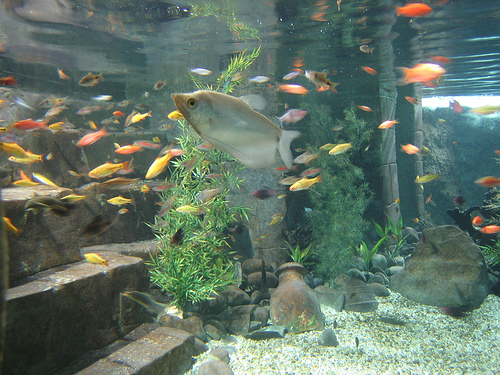Managing a fish tank is rewarding and fun. After all, you carefully select the tank and fish and put it all together with your heart. But it’s always heartbreaking to see the fish die.
Tank fish look beautiful. But when they die, the beauty quickly fades away. Seeing the new fish floating lifeless on the surface of water feels no less than a horror show. And the sad part is that it often seems like the fish died without any apparent reason.
At this point, it’s normal to feel discouraged. But instead of giving up, it’s essential to learn about why fish keep dying. And also, you must look for ways to save your dying fish.
The fact with fish is that even when there seems no possible explanation for their death, there lies a reason. Sometimes, the cause of their death is so minute that you might have seen it but overlooked it thinking that it’s harmless.
Whether you have a new fish tank or an established one, this post will guide you.
Table of Contents
Possible Reasons Why Your Fish Keep Dying in the Tank

Did you know that preventable circumstances cause the majority of fish deaths? That means if you know the cause of death, there is a chance that you might save the fish.
Before you proceed further, we want to say that certain fish species have a short lifespan, like one to two years. So, if you have a pet fish with a short lifespan, you should not get concerned because it’s normal.
But if you have lost a bunch of fish with a better lifespan in a short time, then you need help. Here are a few possible reasons that show why your fish might be dying.
Stress
Believe it or not, but stress is one of the main reasons why fish in tanks die. So, as an aquarium owner, it’s your responsibility to manage the stress.
For this, you need to know about the causes of stress. Below are some significant causes.
Glass Surfing
If the fish inside the tank is continuously swimming up and down, that means there is something wrong.
Generally, fish do not repeatedly swim on the side of the glass. If this happens, it could mean that either the tank is too small for the fish or the tank is overcrowded. In some instances, frantically swimming up and down can also indicate bad water quality or fear by another fish.
Excessive Hiding
It’s okay for fish to hide because sometimes they want little peace to rest. Also, it’s normal for them to hide when they are scared or uncomfortable.
But if the fish is excessively hiding, that means it’s constantly bullied by another fish, which is not healthy. It mostly happens when you make poor stocking choices or when the tank is small.
When you are stocking fish, don’t forget to do quick research about their nature because it’s normal for catfish or plecos to hide. So, if you have these fish species, then excessive hiding is not an issue.
Weight Loss
Physically weighing the fish is not possible, but you can surely tell whether the fish has become too thin or not by noticing it. Weight loss can happen due to less eating. But it can also happen by living in a stressful environment.
Illness
In most cases, stress leads to illness. And prolonged illness can result in death. So, notice the fish in the tank. If it’s constantly falling sick, that means it is stressed, and the living condition is not fit for it.
If the fish looks ill, you must offer it some help. That’s because ill fish are also likely to transmit disease to other tank inhabitants as well.
Lack of Tank Preparation

It’s common for new tank owners to get excited and fill the aquarium with different fish. While doing so, they almost forget to prepare the tank. And this is where the problem starts.
Inappropriate living conditions can make fish die in just a few weeks. Tank preparation is necessary because fish is not the only aquatic being living in the water. It lives with the colonies of bacteria, which plays an essential role in keeping the tank clean.
There is a relationship between fish and bacteria. It’s that without the fish food, the bacteria won’t be able to survive. And without bacteria in the tank, the quality of water would go down.
So, what happens is that when you bring a new tank, it doesn’t have a microbe colony. That’s why it’s important to cycle the tank properly to start the bacteria colony build-up. After the tank has been adequately cycled, you can then transfer the fish into it.
Inappropriate Aquarium Size
It’s always advised to do quick research on different aquarium sizes and how many fish is sufficient.
The first thing that you need to consider when looking for an aquarium is the available space. Measure the area where you want to keep the aquarium and search for the desired tank size.
After finding the right tank, you need to determine which kind of fish can live in it. And also, how much fish you should keep.
These steps sound simple, but many novice tank owners don’t follow them both. After searching for the right aquarium size, they don’t look for the right kind of fish species to survive in such living conditions. It further leads to the loss of beautiful fish.
Remembering a simple rule can save the lives of fish. Make sure that you have one inch of per gallon fish. It means that one gallon of water is sufficient to home a one-inch fish. So, remembering this rule, you should keep the fish.
Also, when you buy certain fish, they appear small juvenile. But sooner, they can grow into monsters. Thus, you must do your research on the maximum size that a fish is capable of growing.
Incompatible Tankmates
Just as important it’s choosing the right tank size is, it’s equally important to choose the correct tank mates. So many fish don’t go along. And if you have selected such fish to stay together in the tank, the weaker one might die.
Generally, there are three kinds of fish. The first is the territorial one that does not like any other fish entering its territory. And if this happens, they will start chasing the other fish in their acclaimed area.
The next is the aggressive fish that are ready to fight. These fish need to be accompanied by calm fish that know how to defend themselves. That’s because other kinds of fish cannot survive with aggressive fish.
Lastly, there are fish that do not have any problem with other fish species. But they cannot live with their kind. If they are forced with their kind, they might create a dangerous living environment.
You can know which fish falls under these three categories either by doing detailed research or by experience. Also, the store from where you are buying the fish can give you some information to offer proper care to the fish.
Poor Water Condition
Poor water not only makes a fish tank look terrible, but it also decreases the oxygen level in the tank water. It further leads to the death of fish. So, it’s essential to keep the fish tank water healthy.
You can bring a test kit to check the level of nitrate, nitrates, and pH. After checking the level, you can make a few corrections to fix the levels if things are not under control. It’s also helpful to know the water source’s pH reading that you are using to fill the tank.
The best thing is that many tropical fish can quickly adapt themselves to different pH levels. But it’s still advised to do a quick research. This way, you will be prepared for pH swing, and your fish won’t die due to this factor.
If the tank water has visually turned bad, that means you need to change the water ASAP. That’s because fish can’t live in such a place.
Overfeeding
Many tank owners don’t realize this, but overfeeding is just as bad as anything else. A simple rule is to feed the fish once a day. And make sure that they finish their food in just a few minutes. If they are taking longer than usual, that means you have overfed them.
You must choose quality food that can provide all the required nutrients to the fish. If you want to offer special food to the fish, offer them sparingly. If you want, you can also add veggies—fish likes veggies and thawed frozen foods.
Another thing is that the amount of food a fish consume should also come out at the end. But overfeeding is not helpful. It’s because the leftover food decays in the water, which further pollutes the living condition.
Indeed, the bacteria colony can try to bring living conditions under control. But if the amount of food decay has increased, then the situation can become toxic.
Not to mention, overfeeding fish can also result in algae outbreaks. How, you might wonder? Well, nitrogen-rich food can quickly turn the tank green. So, it’s essential to feed the amount that the fish can consume in a few minutes.
Bad Tank Management Practice

Lastly, bad tank management practices can also kill fish. The best thing is that fish tank management is not that hard. You only have to do a couple of things to keep the aquarium water fresh and fish healthy.
In an ideal scenario, you should do the maintenance monthly. It includes:
Water Change
If you have an aquarium, you must remember that the solution to pollution is dilution. So, you should replace the old tank water with fresh water. This way, you can dilute any waste chemical and thus help the fish and bacteria to live in a friendly environment.
But while doing so, you should not remove the entire water. That’s because then the bacteria might not be able to survive. And without bacteria, the tank water condition would become inhospitable.
If you have an unplanted aquarium, you can make around 20% changes twice a month. And in the case of a planted fish tank, you can make 30% changes once a month.
Vacuum the Gravel
No matter how concisely you are feeding the fish, certain food particles will get settled at the bottom of the tank. So, you should vacuum from time to time to get rid of the decayed food particles. This way, the tank water will not get polluted quickly.
You can easily find an ideal vacuum cleaner for a fish tank online. While purchasing a cleaner, always compare the price and power with other options.
Clean Algae
Certain fish species can eat the algae and keep the tank clean. But they can’t do it all. So, it’s essential to clean the glass decorations, stones, and other decorative items placed inside the tank.
Excessive algae build-up can not only damage the balance of the aquarium, but they also look bad. If you don’t want to get your hand dirty, you can invest in scrubbers and scrapers. But avoid using chemicals.
Filter Maintenance
After cleaning the algae, you can then move towards cleaning the filter. Monthly cleaning of filters is recommended. But you should not change the filter sponge quickly. That’s because some good bacteria live in the sponge.
Test the Water
It’s not bad to test the water because this way, you can know the pH level. And then, you can take appropriate measures to create a balance in the fish tank.
How To Prevent Fish From Dying
Now, as you know the possible reasons why fish keep dying, it’s essential to know how to prevent the fish from dying. As a tank owner, it’s your responsibility to save the fish.
Seeing a dead fish floating on the top of the water surface is not just devastating, but it can also contaminate the water. You can follow a few steps to make sure that the fish does not die.
Feeding and Caring
Small Portion Food
You might know that overfeeding can be dangerous for the fish. But how should you feed the fish? Experts suggest giving small and frequent meals to the fish. This way, fish will not only finish the small meals in just a few minutes, but you can also keep the water filtration system of the tank clean.
While purchasing the fish food, you can take experts’ recommendations to know the right food according to the fish species.
Salt Water Bath
To offer a better living environment to the fish, you can add natural salt to the water. For this, you can take a clean container. Fill it with tank water and freshwater. After that, you can put one teaspoon of salt per gallon in the water. And then, add the fish.
After adding the fish, you can observe them. If they are showing rapid signs of movement, you should instantly transfer them into the original tank. Also, if your fish are on a certain kind of medication, you should offer them the salt bath before giving them the medications.
Chlorophyll
Adding chlorophyll to the tank can also be effective as it helps in boosting the immune system of the fish. Generally, chlorophyll comes in drops for quick application. Before adding chlorophyll to the tank, you should read the instructions.
Look for Signs of Infection and Disease
If you notice a whitish-grey thread on your fish’s skin, that means worms have attacked it. If such worms are present on the fish’s body, fish will scratch themselves against objects.
If you want to remove the worms and parasites, offer your fish a 5 minutes saltwater bath. It will force the parasite to fall off their body.
Also, if your fish is covered in white spots that look like sand, that means it needs help. White spots can make the fish feel itchy and develop respiratory issues. So, it’s essential to treat this issue.
For this, you can use a medicated ick guard. Also, frequent cleaning of the tank can minimize the risk of developing white spots.
Conclusion
Keeping a fish tank sounds fun, but you should be ready for the challenges that come with it. When it comes to fish, they can easily fall sick or get infected. It can lead to death.
But if you don’t want to see a dying fish on the water surface, you must take certain precautions. You can begin by cleaning the tank and creating a friendly environment for the fish to live in.
This way, your fish will be able to live freely in the tank without the fear of getting infected.
